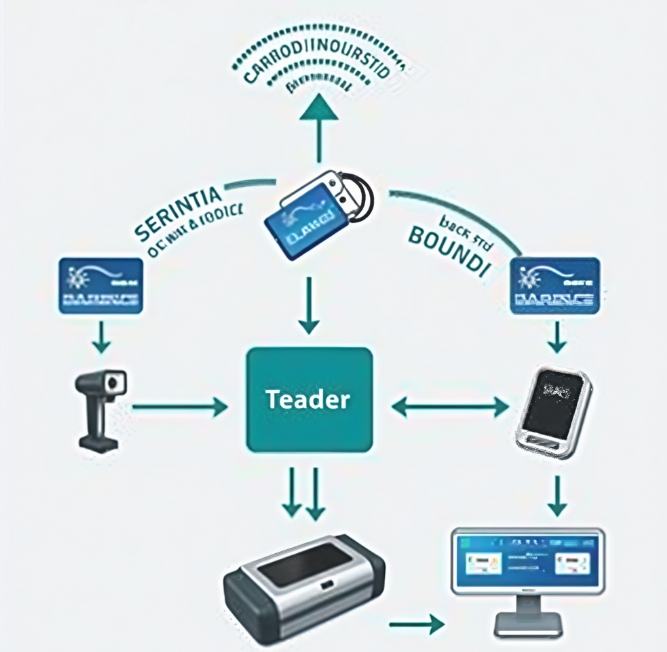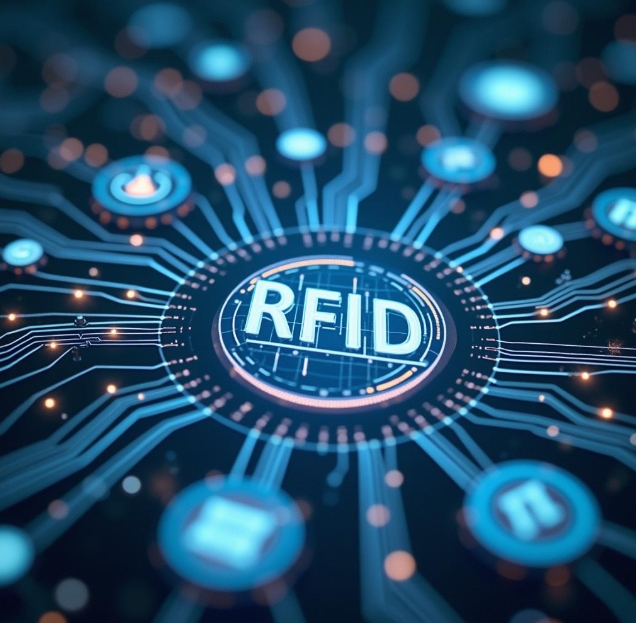Radio Frequency Identification (RFID) and the Internet of Things: Key Technologies Connecting the Intelligent World
- latest articles
- 1.DApp Development & Customization: Merging Diverse Market Needs with User Experience 2.Analysis of the Core Technical System in DApp Project Development 3.How to achieve cross-chain interoperability in Web3 projects? 4.How does the tokenization of points reconstruct the e-commerce ecosystem? 5.How to Set and Track Data Metrics for a Points Mall? 6.What is DApp Development? Core Concepts and Technical Analysis 7.Inventory of commonly used Web3 development tools and usage tips 8.Development of a Distribution System Integrated with Social E-commerce 9.Six Key Steps for Businesses to Build a Points Mall System 10.What is DApp Development? A Comprehensive Guide from Concept to Implementation
- Popular Articles
- 1.Future Trends and Technology Predictions for APP Development in 2025 2.Analysis of the DeFi Ecosystem: How Developers Can Participate in Decentralized Finance Innovation 3.From Zero to One: How PI Mall Revolutionizes the Traditional E-commerce Model 4.DAPP Development | Best Practices for Professional Customization and Rapid Launch 5.Recommended by the Web3 developer community: the most noteworthy forums and resources 6.From Cloud Computing to Computing Power Leasing: Building a Flexible and Scalable Computing Resource Platform 7.How to Develop a Successful Douyin Mini Program: Technical Architecture and Best Practices 8.Shared Bike System APP: The Convenient Choice in the Era of Smart Travel 9.How to Create a Successful Dating App: From Needs Analysis to User Experience Design 10.From Design to Development: The Complete Process of Bringing an APP Idea to Life
Introduction
With the rapid advancement of technology, the Internet of Things (IoT) is gradually becoming a crucial pillar of the intelligent society. In this process, Radio Frequency Identification (RFID) technology plays a vital role. RFID not only provides new methods for identifying and tracking items and devices but also supports seamless connectivity and data exchange among smart devices, driving the digital transformation across many industries.
This article will delve into the role of RFID technology in the IoT, analyzing its working principles, application scenarios, and how this technology enables intelligent connections between devices, thereby building a more efficient and intelligent future world.
I. Overview of Radio Frequency Identification (RFID) Technology
1.1 What is RFID Technology?
Radio Frequency Identification (RFID) is an automatic identification technology that uses radio frequency signals for wireless communication. It utilizes radio waves to transmit information between tags and readers, enabling the identification, tracking, and management of items.
An RFID system typically consists of three main components:
Tag: Contains a microchip and antenna, used to store data and communicate with the RFID reader.
Reader: Responsible for emitting radio frequency signals, receiving data from the tags, and transmitting the information to a central system or database.
Backend System: Receives data transmitted by the reader for storage, analysis, and processing.

1.2 How RFID Technology Works
The working principle of RFID is based on radio wave propagation. When an RFID reader emits a radio frequency signal at a specific frequency, the antenna in the RFID tag receives the signal and reflects back a signal containing stored information. The reader then receives the returned signal from the tag and extracts the data through decoding.
RFID tags are mainly categorized into the following types:
Passive Tags: Do not contain a battery and rely on the radio frequency signal from the reader for energy.
Active Tags: Have an internal battery and can actively transmit signals, allowing for longer transmission distances.
Semi-Active Tags: Have an internal battery but only activate transmission when they receive a signal from the reader.
II. The Integration of RFID and IoT
2.1 Definition and Development of IoT
The Internet of Things (IoT) refers to the connection of physical items to the internet through technologies such as sensors, devices, and communication networks, enabling the exchange and processing of information. IoT transforms devices and items in the physical world into digital information, achieving intelligent interconnection between devices.
As a core component of IoT, RFID technology enables items to automatically exchange information with readers via tags without human intervention. It allows every device and item in the IoT to achieve real-time, automated identification and management.
2.2 How RFID Functions in IoT
In IoT, the core role of RFID technology is to provide automatic identification, tracking, and data exchange capabilities for items and devices. Specifically, RFID supports several key aspects of IoT:
Automatic Device Identification and Data Collection: Through RFID tags, devices and items in IoT can be automatically identified, and data can be transmitted in real-time to cloud systems for processing.
Real-Time Location and Tracking: RFID can track the location of items in real-time via readers, ensuring accuracy and timeliness of information.
Seamless Connectivity Between Devices: RFID tags can exchange data with other devices through readers, enabling intelligent collaboration and automated control among devices.
2.3 Synergistic Effects of RFID and IoT
The integration of RFID and IoT can significantly enhance the efficiency of data collection and processing. In the IoT architecture, RFID technology serves as the front-end data collection module, working closely with IoT platforms (such as cloud computing and big data analytics) to achieve end-to-end data transmission from sensors and devices to cloud systems. The IoT platform then optimizes device management, process control, inventory management, and other aspects through intelligent analysis of this data.
III. Application Scenarios of RFID in IoT
3.1 Smart Logistics and Supply Chain Management
RFID is widely used in smart logistics and supply chain management. By attaching RFID tags to goods or packaging, companies can track the status, location, and transportation routes of each item in real-time. RFID technology not only enhances transparency in warehousing and transportation but also automates inventory management, reducing human errors.
Real-Time Tracking and Management: RFID tags can monitor the transportation status of goods in real-time, with the entire process from warehouse to store reflected in the backend system.
Inventory Management: RFID can automatically record inventory information, enabling precise inventory management and helping businesses optimize inventory layout.
3.2 Smart Retail and Customer Experience
The application of RFID technology in smart retail helps enhance the customer shopping experience and improve operational efficiency for merchants. By embedding RFID tags in products, merchants can automatically identify sales trends, enabling automated shelf management, inventory management, and checkout processes.
Automated Checkout Systems: RFID enables seamless checkout, where customers simply place items in a self-checkout area, and the system automatically identifies and calculates the total price.
Precise Inventory Management: RFID technology can automatically record product sales information and inventory status, helping merchants adjust inventory in real-time and replenish popular items.
3.3 Smart Manufacturing and Industrial IoT
The application of RFID in smart manufacturing and Industrial IoT can significantly improve production efficiency and device management accuracy. By applying RFID tags to production equipment, components, and finished products, precise control of automated production lines and real-time data monitoring can be achieved.
Device Management and Maintenance: Through RFID tags, companies can monitor the operational status of equipment in real-time, predict failures in advance, and perform maintenance to reduce downtime.
Production Line Optimization: RFID can facilitate automated data transmission and monitoring at various stages of the production line, thereby optimizing production efficiency.
3.4 Smart Home and Health Monitoring
In the smart home sector, RFID can provide reliable data collection and management support for IoT. By attaching RFID tags to appliances and home products, home management systems can achieve automatic device identification and control. Additionally, RFID technology can be used in health monitoring devices to automatically collect physiological data from the human body.

IV. Challenges and Future Development of RFID Technology
4.1 Continuous Innovation and Technical Challenges
Although RFID technology has broad application prospects in IoT, it still faces several challenges in practical implementation:
Cost Issues: Although the cost of RFID tags has decreased over the years, it remains a limiting factor for widespread adoption in some large-scale deployment scenarios.
Data Privacy and Security: Data stored on RFID tags can be easily read illegally, making data security a critical consideration when applying RFID technology.
Standardization Issues: The standardization of RFID technology is still insufficient, and global compatibility issues need to be resolved.
4.2 Future Prospects of RFID Technology
With the continuous development of IoT, RFID technology is expected to achieve new breakthroughs in the future. RFID will become more miniaturized and intelligent, adapting to a wider range of industry applications. Moreover, with advancements in 5G communication and big data technologies, RFID will integrate more deeply with other technologies, providing more efficient and intelligent IoT solutions.
Conclusion
As a key technology in IoT, Radio Frequency Identification (RFID) not only provides intelligent connectivity between devices and items in the smart world but also drives innovation and transformation across multiple industries. With technological advancements and the continuous expansion of application scenarios, RFID will play an increasingly important role in the future intelligent society, becoming an indispensable bridge connecting the smart world.
-

How does artificial intelligence technology transform the operational models of modern enterprises?
In the wave of the digital era, artificial intelligence (AI) technology has tran···
-

How to Utilize Artificial Intelligence for Precision Medicine and Health Management
With the rapid advancement of technology, artificial intelligence (AI) has demon···
-

Integration and Application of Artificial Intelligence and Robotics
In today's era of rapid technological advancement, the integration of artificial···

 Blockchain
Blockchain










